1. Discovering Devices with CDP and LLDP
“Automate network topology mapping and device discovery using CDP and LLDP protocols for real-time insights”
2. Synchronizing Time with NTP
“Ensure precise time synchronization across network devices with NTP for accurate log correlation.”
3. Monitoring Devices with SNMP
“Monitor network performance and automate alerts using SNMP for proactive device management.”
4. Capturing Logs with Syslog
“Centralize network logging with Syslog for comprehensive visibility and rapid troubleshooting.”
5. Managing Configurations and Backups
“Automate network configuration backups and version control for consistency and disaster recovery.”
6. IOS Image Management and Recovery
“Manage network device software versions with proper testing and recovery mechanisms for upgrades.”
Published: 15 July 2025
Author: Jean Claude Munyakazi
Category: Monitoring Devices with SNMP
Reading Time: 13 minutes
Last Updated: 01 September 2025
Network Management
A Practical Guide to Discovering, Maintaining, and Monitoring Your Network
Monitoring Devices with SNMP
Simple Network Management Protocol (SNMP) is a foundational tool in network administration, used to monitor, manage, and troubleshoot devices across an organization’s infrastructure. Whether in a data center or branch office, SNMP provides a standardized way to query devices, receive alerts, and remotely adjust configurations.
Why SNMP Matters in Modern Networks
Network Visibility Stats:
– 87% of network outages could be prevented with proper monitoring
– SNMP reduces troubleshooting time by 60% on average
– Real-time alerts can prevent 70% of cascading failures
– ROI: $3.2M saved annually for 1000+ device networks

Key Components Explained
| Component | Function | Location |
|---|---|---|
| SNMP Manager | Sends requests, receives responses and traps | Network Management System |
| SNMP Agent | Responds to requests, sends traps | Network devices |
| MIB (Management Information Base) | Database of manageable objects | Both manager and agent |
| OID (Object Identifier) | Unique identifier for each object | MIB structure |
SNMP Versions and Security
Version Comparison
| Feature | SNMPv1 | SNMPv2c | SNMPv3 |
|---|---|---|---|
| Security | Community strings (plaintext) | Community strings (plaintext) | Authentication + Encryption |
| Data Types | Basic | Enhanced (64-bit counters) | Enhanced |
| Bulk Operations | ❌ | ✅ GetBulk | ✅ GetBulk |
| Error Handling | Basic | Improved | Advanced |
| Recommended Use | Legacy only | Internal networks | All environments |

SNMP Operations and Port Usage
Core SNMP Operations
| Operation | Port | Direction | Purpose | Example |
|---|---|---|---|---|
| GET | 161 | Manager → Agent | Retrieve single value | Get interface status |
| GET-NEXT | 161 | Manager → Agent | Retrieve next OID | Walk through MIB |
| GET-BULK | 161 | Manager → Agent | Retrieve multiple values | Bulk interface stats |
| SET | 161 | Manager → Agent | Modify device configuration | Change interface description |
| TRAP | 162 | Agent → Manager | Unsolicited notification | Interface down alert |

Device Configuration Examples
Cisco IOS Configuration
# Basic SNMP configuration
snmp-server community public RO # Read-only community
snmp-server community private RW # Read-write community
snmp-server location "Data Center A"
snmp-server contact "[email protected]"
# SNMPv3 configuration (recommended)
snmp-server group ADMIN v3 auth
snmp-server user admin1 ADMIN v3 auth sha password123 priv aes 128 encryption123
snmp-server host 192.168.1.100 version 3 auth admin1
# Enable specific traps
snmp-server enable traps snmp linkdown linkup
snmp-server enable traps config
snmp-server enable traps hsrp
Juniper Junos Configuration
# Basic SNMP setup
set snmp community public authorization read-only
set snmp location "Branch Office B"
set snmp contact "[email protected]"
# SNMPv3 configuration
set snmp v3 usm local-engine user admin1 authentication-sha authentication-password password123
set snmp v3 usm local-engine user admin1 privacy-aes128 privacy-password encryption123
set snmp v3 target-address mgmt-server address 192.168.1.100
set snmp v3 target-address mgmt-server target-parameters snmpv3-auth
# Enable traps
set snmp trap-group mgmt-traps targets mgmt-server
HP/Aruba Configuration
# Basic SNMP setup
snmp-server community "public" unrestricted
snmp-server location "Network Closet C"
snmp-server contact "[email protected]"
# Restrict community access
snmp-server community "monitoring" restricted
ip access-list standard "SNMP_HOSTS"
10 permit host 192.168.1.100
# Enable traps
snmp-server host 192.168.1.100 community "monitoring" trap-level all
Fortinet FortiOS Configuration
# CLI configuration
config system snmp sysinfo
set status enable
set location "Firewall DMZ"
set contact-info "[email protected]"
end
config system snmp community
edit 1
set name "monitoring"
set query-v1-status enable
set query-v2c-status enable
set trap-v1-status enable
set trap-v2c-status enable
set hosts "192.168.1.100"
next
end

Common OIDs Reference
| OID | Object | Description | Example Value |
|---|---|---|---|
| 1.3.6.1.2.1.1.1.0 | sysDescr | System description | "Cisco IOS Software..." |
| 1.3.6.1.2.1.1.3.0 | sysUpTime | System uptime | 1234567 (timeticks) |
| 1.3.6.1.2.1.1.5.0 | sysName | System name | "Router01" |
| 1.3.6.1.2.1.2.1.0 | ifNumber | Number of interfaces | 24 |
| 1.3.6.1.2.1.2.2.1.2 | ifDescr | Interface description | "GigabitEthernet0/1" |
| 1.3.6.1.2.1.2.2.1.8 | ifOperStatus | Interface status | 1 (up), 2 (down) |
| 1.3.6.1.2.1.2.2.1.10 | ifInOctets | Interface input bytes | 1234567890 |
SNMP Monitoring Tools Comparison
| Tool | Best For | Key Features | Scalability |
|---|---|---|---|
| LibreNMS | Mixed environments | Auto-discovery, alerting, graphing | 1000+ devices |
| Zabbix | Enterprise monitoring | Templates, trending, maps | 10,000+ devices |
| Nagios | Service monitoring | Plugin ecosystem, alerting | 1000+ devices |
| Cacti | Performance graphing | RRDtool integration, templates | 500+ devices |
| Observium | Network discovery | Auto-discovery, clean interface | 1000+ devices |
| Tool | Vendor | Strengths | Typical Use Case |
|---|---|---|---|
| PRTG | Paessler | Easy setup, all-in-one | SMB networks |
| SolarWinds NPM | SolarWinds | Comprehensive features, scalable | Enterprise networks |
| ManageEngine OpManager | Zoho | Cost-effective, integrated suite | Mid-size networks |
| Datadog | Datadog | Cloud-native, analytics | Cloud/hybrid environments |
Setting Up SNMP Monitoring
Step 1: Network Discovery Script
#!/bin/bash
# discover-snmp-devices.sh
NETWORK="192.168.1.0/24"
COMMUNITY="public"
echo "Discovering SNMP devices on $NETWORK..."
nmap -sU -p 161 --open $NETWORK | grep -B 4 "161/udp open" | grep "Nmap scan report" | cut -d' ' -f5 > snmp_devices.txt
while read -r IP; do
SYSNAME=$(snmpget -v2c -c $COMMUNITY $IP 1.3.6.1.2.1.1.5.0 2>/dev/null | cut -d: -f4 | tr -d ' ')
if [ ! -z "$SYSNAME" ]; then
echo "$IP - $SYSNAME"
fi
done < snmp_devices.txt
Step 2: Basic Monitoring Script
#!/usr/bin/env python3
# snmp-monitor.py
from pysnmp.hlapi import *
import time
def get_snmp_data(target, community, oid):
"""Get SNMP data from device"""
for (errorIndication, errorStatus, errorIndex, varBinds) in nextCmd(
SnmpEngine(),
CommunityData(community),
UdpTransportTarget((target, 161)),
ContextData(),
ObjectType(ObjectIdentity(oid)),
lexicographicMode=False):
if errorIndication:
print(f"Error: {errorIndication}")
break
elif errorStatus:
print(f"Error: {errorStatus.prettyPrint()}")
break
else:
for varBind in varBinds:
return varBind[1]
def monitor_interface(device, community, interface_index):
"""Monitor specific interface"""
# Interface description
desc_oid = f"1.3.6.1.2.1.2.2.1.2.{interface_index}"
# Interface status
status_oid = f"1.3.6.1.2.1.2.2.1.8.{interface_index}"
# Interface input bytes
in_bytes_oid = f"1.3.6.1.2.1.2.2.1.10.{interface_index}"
desc = get_snmp_data(device, community, desc_oid)
status = get_snmp_data(device, community, status_oid)
in_bytes = get_snmp_data(device, community, in_bytes_oid)
status_text = "UP" if status == 1 else "DOWN"
print(f"{desc}: {status_text}, Input Bytes: {in_bytes}")
# Example usage
if __name__ == "__main__":
device = "192.168.1.1"
community = "public"
# Monitor interface 1
monitor_interface(device, community, 1)
Step 3: Trap Receiver Setup
#!/usr/bin/env python3
# trap-receiver.py
from pysnmp.carrier.asyncore.dispatch import AsyncoreDispatcher
from pysnmp.carrier.asyncore.dgram import udp
from pysnmp.proto.api import v2c
from pysnmp import debug
import datetime
def trap_handler(transportDispatcher, transportDomain, transportAddress, wholeMsg):
"""Handle incoming SNMP traps"""
while wholeMsg:
msgVer = int(v2c.apiMessage.getVersion(wholeMsg))
if msgVer in v2c.protoModules:
pMod = v2c.protoModules[msgVer]
else:
print(f"Unsupported SNMP version {msgVer}")
return
reqMsg, wholeMsg = pMod.Message().fromBytes(wholeMsg)
reqPDU = pMod.apiMessage.getPDU(reqMsg)
if reqPDU.isSameTypeWith(pMod.TrapPDU()):
print(f"\n[{datetime.datetime.now()}] TRAP from {transportAddress[0]}:")
for oid, val in pMod.apiTrapPDU.getVarBinds(reqPDU):
print(f" {oid} = {val}")
return wholeMsg
# Set up trap receiver
transportDispatcher = AsyncoreDispatcher()
transportDispatcher.registerRecvCbFun(trap_handler)
transportDispatcher.registerTransport(
udp.domainName, udp.UdpSocketTransport().openServerMode(('0.0.0.0', 162))
)
transportDispatcher.registerTimerCbFun(lambda: None)
print("SNMP Trap Receiver started on port 162...")
try:
transportDispatcher.runDispatcher()
except KeyboardInterrupt:
print("\nShutting down...")
finally:
transportDispatcher.closeDispatcher()
Performance Optimization and Best Practices
Polling Strategies
| Strategy | Interval | Use Case | Pros | Cons |
|---|---|---|---|---|
| High Frequency | 1-5 min | Critical interfaces | Real-time visibility | High network load |
| Standard | 5-15 min | General monitoring | Balanced approach | Moderate resolution |
| Low Frequency | 15-60 min | Baseline metrics | Low overhead | Delayed detection |
SNMP Optimization Tips
# Instead of walking entire MIB
snmpwalk -v2c -c public 192.168.1.1 1.3.6.1.2.1.2.2.1
# Query specific OIDs
snmpget -v2c -c public 192.168.1.1 1.3.6.1.2.1.2.2.1.8.1 1.3.6.1.2.1.2.2.1.8.2
# Use GetBulk for multiple values
snmpbulkget -v2c -c public -Cn0 -Cr10 192.168.1.1 1.3.6.1.2.1.2.2.1.10
# Use ACLs to restrict SNMP access
access-list 99 permit 192.168.1.100
access-list 99 deny any
snmp-server community monitoring RO 99
Troubleshooting Common SNMP Issues
Issue Resolution Table
| Problem | Symptoms | Common Causes | Solutions |
|---|---|---|---|
| No Response | Timeouts, no data | Firewall, wrong community | Check connectivity, verify community |
| Incomplete Data | Missing OIDs | Unsupported MIB | Update MIB files, check vendor support |
| High CPU Usage | Device performance issues | Excessive polling | Reduce polling frequency, optimize queries |
| Authentication Errors | SNMPv3 failures | Wrong credentials | Verify username/password, check security level |
SNMP Diagnostics and Integration
# Test SNMP connectivity
snmpget -v2c -c public 192.168.1.1 1.3.6.1.2.1.1.1.0
# Check supported versions
snmpget -v1 -c public 192.168.1.1 1.3.6.1.2.1.1.1.0
snmpget -v2c -c public 192.168.1.1 1.3.6.1.2.1.1.1.0
snmpget -v3 -u admin1 -l authPriv -a SHA -A password123 -x AES -X encryption123 192.168.1.1 1.3.6.1.2.1.1.1.0
# Debug SNMP issues
snmpwalk -v2c -c public -d 192.168.1.1 1.3.6.1.2.1.1
# Prometheus SNMP Exporter Configuration
modules:
if_mib:
walk:
- 1.3.6.1.2.1.2.2.1.2 # ifDescr
- 1.3.6.1.2.1.2.2.1.8 # ifOperStatus
- 1.3.6.1.2.1.2.2.1.10 # ifInOctets
- 1.3.6.1.2.1.2.2.1.16 # ifOutOctets
metrics:
- name: ifOperStatus
oid: 1.3.6.1.2.1.2.2.1.8
type: gauge
help: Interface operational status
# Flask API for SNMP queries
from flask import Flask, jsonify
import requests
app = Flask(__name__)
@app.route('/api/device/<ip>/interfaces')
def get_interfaces(ip):
"""Get device interfaces via SNMP"""
try:
# Your SNMP query logic here
interfaces = query_snmp_interfaces(ip)
return jsonify(interfaces)
except Exception as e:
return jsonify({'error': str(e)}), 500
@app.route('/api/device/<ip>/status')
def get_device_status(ip):
"""Get device status via SNMP"""
try:
status = query_snmp_status(ip)
return jsonify(status)
except Exception as e:
return jsonify({'error': str(e)}), 500
Conclusion
SNMP remains a cornerstone of network monitoring, providing standardized access to device metrics and real-time alerting capabilities. While newer protocols like NETCONF and RESTCONF offer enhanced features, SNMP’s universal support and mature ecosystem make it indispensable for comprehensive network visibility.
Key takeaways for effective SNMP implementation:
- Always use SNMPv3 for security-sensitive environments
- Implement proper access controls and community string management
- Choose appropriate polling intervals based on requirements
- Leverage bulk operations for efficiency
- Integrate with modern monitoring platforms for enhanced analytics
Start with basic monitoring of critical metrics, then gradually expand your SNMP implementation as your network monitoring needs evolve.
